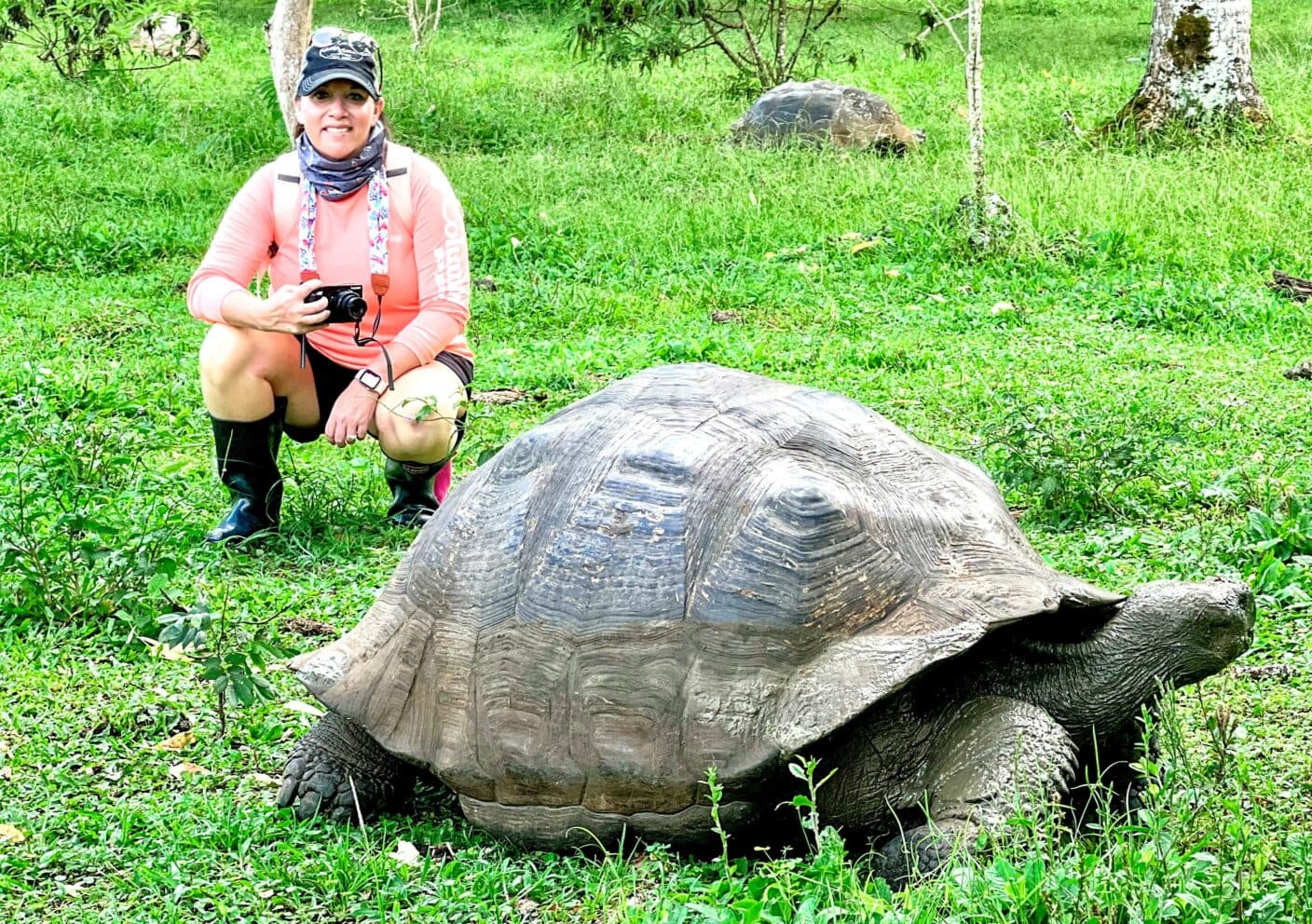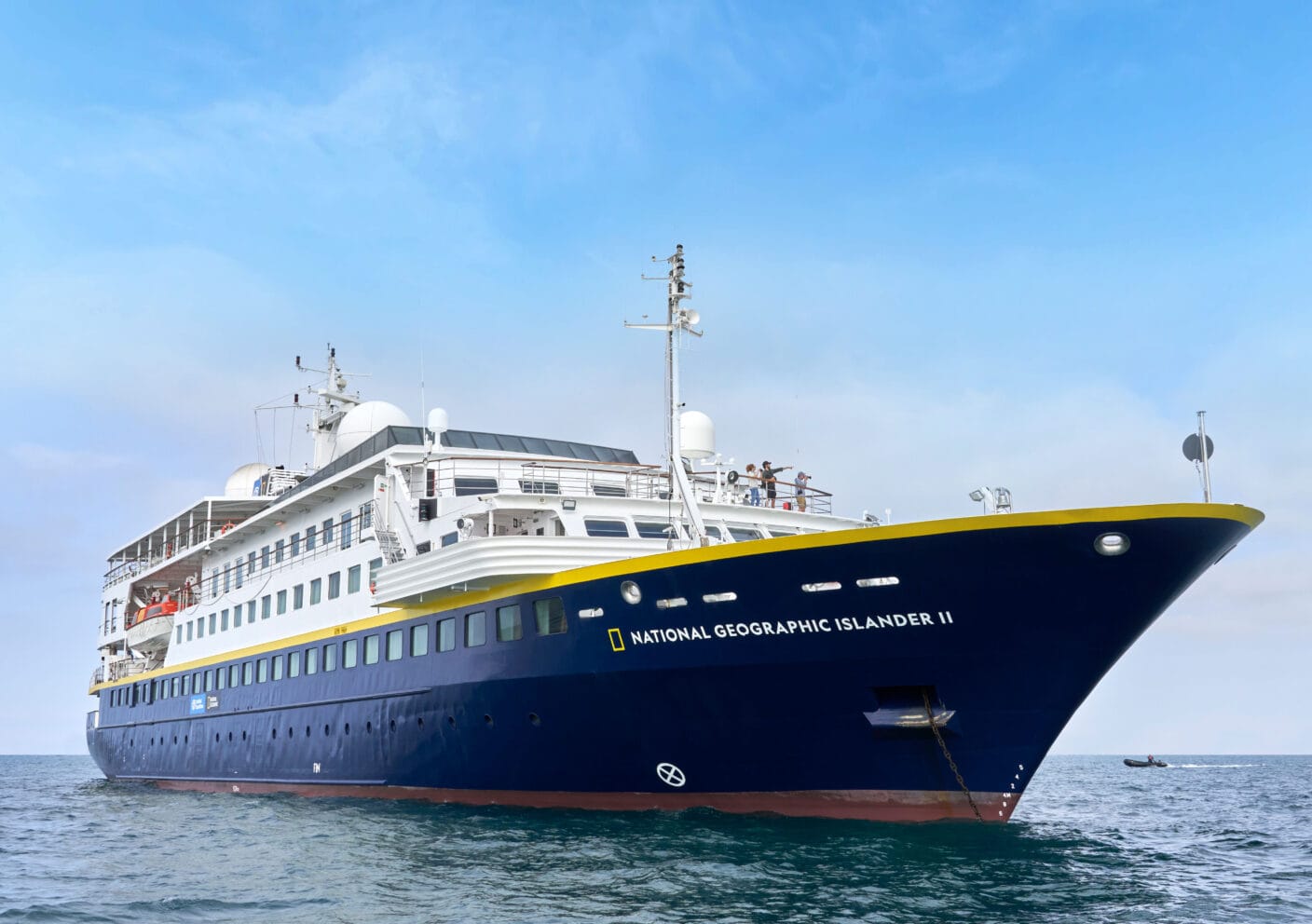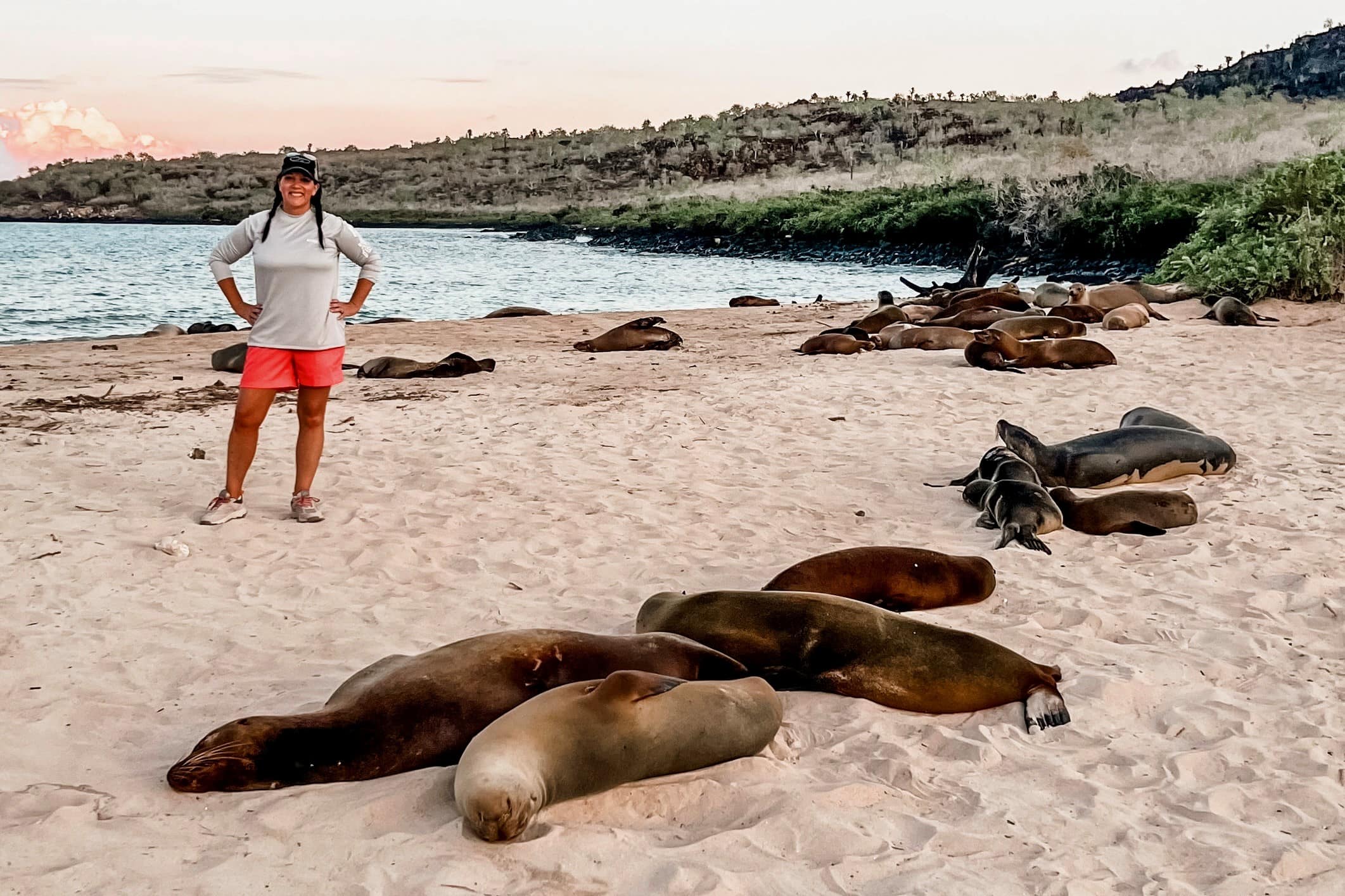Keri is our ‘logistics guru’ and her motto is, ‘no stone left unturned’ when it comes to fine-tuning the prep work involved for our clients’ trips. Recently, she cruised on the National Geographic Islander II to the Galapagos. We asked Keri a few questions about her trip, which gave us an enriching synopsis about how it would feel to step foot into this natural world wonder.
- Since you have a strong logistics background in travel planning, what did that look like in preparing for your trip to Galapagos?
My background in expedition travel logistics paved the way for a worry-free travel planning experience and ensured I felt ready for any situation. Although my expedition was confirmed about three weeks departure and was an adequate amount of time to prepare, I’d say 1-2 months would be sufficient for most travelers.
- Did you need to purchase much gear? What were the most helpful items you packed, and those that were unnecessary?
I didn’t have a need to purchase a significant amount of gear. Having a pair of sturdy and comfortable, closed-toe hiking shoes along with waterproof shoes/sandals is essential. For me, appropriate footwear was the most important item I required, and I did a fair amount of research trying on a variety of brands and styles before landing on the perfect pairs. Additionally, our Expedition Leader did a fantastic job preparing us for each visit to the islands, so we knew how to dress accordingly.
Lightweight, breathable clothing, a small day pack, and a waterproof dry bag also helped ensure we were adequately prepared for our trek around the islands. Having a hat, sunglasses, and sunscreen along with environmentally safe and effective insect repellent ensured we were prepared for the various conditions. Our expedition had us visit during the warm and wet season, so I brought rain gear expecting to use it frequently, however, we didn’t encounter one drop of rain.
- What was your experience like on land?
The incredible part about Galapagos is each island presented its own distinct characteristics from rocky coastlines to volcanic formations to lush vegetation depending on where we were exploring at that time. It made us feel like we were visiting completely different parts of the world with each new island we encountered.
We were able to get up close with endemic species that are only found there such as the Galápagos giant tortoise, marine iguanas, and Galápagos penguins. Exploring the islands on foot allowed us to observe the wildlife and their habitats up close, with some islands having well-maintained trails where we could walk to discover the many wonders.
- How helpful is it to have a naturalist guiding you through this hiking journey to see wildlife?
The licensed naturalist guides provided us with guidelines and instructions to ensure we were able to enjoy the islands without leaving a negative impact. They are there to ensure that the delicate ecosystem is preserved, and the wildlife protected. Beyond that, they are very engaging and enthusiastic about their role in this process providing their knowledge and insights into the islands, the wildlife, and conservation efforts. Even though they can see this beautiful place on earth and the wildlife that lives there on an ongoing basis, they still personally showed awe and wonder with each place we explored.

Just to mention, it is strictly prohibited to touch or handle any of the wildlife on the islands as it is a protected area with regulations in place to preserve and minimize human impact. The sea lions, Sally Lightfoot Crabs, and iguanas were very curious, and some did approach, which is why it is so important to resist the temptation to reach out or touch them. The wildlife indicated no fear during our hikes, which allowed for the most remarkable up-close encounters.
- You mentioned that you did a lot of snorkeling. What was that like?
Like the islands we visited, the various designated snorkeling sites allowed us the opportunity to see different features such as coral reefs and volcanic formations along with encounters with a large variety of diverse marine life. We came face to face with playful sea lions and swam alongside sea turtles, marine iguanas, penguins, rays and even sharks. It was a whole separate fascinating world underwater!
Both deep and shallow water snorkeling opportunities were provided to allow all guests to explore in a way that made them feel most comfortable. Each has its own charm and advantages. While shallow water snorkeling tends to be calmer conditions, we really enjoyed the deep waters for the greater sense of adventure and exploration. This also allowed us to encounter white-tip sharks, hammerhead sharks, and large rays. Deep water snorkeling was accessed by entering the water via Zodiac in designated locations and snorkeling in a direction keeping the island to one side or the other.
The Naturalists did go into the water to join in the snorkeling while the Zodiac driver followed along in case someone needed to get back onboard. If you stayed directly next to the Naturalist, they were wonderful at pointing out things of interest. But you were welcome to swim along the path freely keeping an eye on the group to not get too far detached.
- Visiting Galapagos is an active trip. How much leisure time did you get while on the ship?
Visiting the Galápagos was a very active trip but that was also dependent on the activities we chose to participate in. A variety of educational and photographic lectures, hiking, snorkeling, kayaking or paddle-boarding, and Zodiac/Glass-bottom excursions were available to ensure activities that met all guests interest and capabilities.
We did enjoy a fair amount of time to relax, and the option was provided to participate or not in any given activity. The choice was really ours. However, we were so intrigued and fascinated from the very beginning that we wanted to explore and participate in as many things as possible. I felt like we were able to maintain a good balance even enjoying a visit to the spa for a massage.
- Describe your initial reaction on day 1 as to how you felt on board the National Geographic Islander II. What was your impression of the vessel, the staff, the food, etc.
From our first moments on board the all-suite National Geographic Islander II, it was evident that even the finest details had been considered. It felt abundantly spacious in the suites and throughout the public areas. Together the amenities and guest-to-crew ratio emulated a private yacht experience. The food was locally sourced wherever possible and of the freshest quality. The fruits were some of the juiciest and most flavorful I’ve ever tasted. Often the meals were designed and influenced by local flavors or ingredients giving guests an experience they’ve never had before. The open bridge policy was an exciting feature that we revisited several times throughout our voyage. The crew was very accommodating and seemingly delighted to share their space, give us the grand tour, and answer any questions.

- Does expedition cruising feel like one big family on board by the end of the cruise?
The guests aboard the National Geographic Islander II consisted of like-minded individuals with a wide range of motivations or interests in visiting the Galápagos Islands. From the adventurous-spirited and curious traveler to the amateur photographer or wildlife enthusiasts, all came together to explore this destination and left as friends. By the end of the voyage, no one wanted it to end, not only for the chance to continue to experience the beauty of the islands but also so that experiencing it together wouldn’t end. A large majority of our group so much enjoyed one another’s company that we dined and hung out when we returned to the mainland and vowed to travel together again. We’ve stayed connected since returning, sharing pictures and reminiscing while continuing to grow our friendships from home.
- Lastly, did cruising to Galapagos change anything about the way you think about nature & wildlife, educational-style travel, group travel or just in general? How did this experience change you and your thoughts about the environment and appreciation for our world.
This was probably the hardest question as it invokes the return of so many emotions from my time there. Overall, the Galápagos Islands offered a unique and immersive experience which left a very profound impact on the way I think about nature. Witnessing the pristine natural beauty and the efforts of so many to protect and conserve inspired a deeper appreciation and infused a sense of responsibility about the significance of our role in preserving and maintaining not only the Galápagos but the planet.
Learning about how fragile ecosystems can be and how easily they can be disrupted by human interaction, or the introduction of invasive species emphasized the need to take action in my own life to preserve the environment and promote sustainability. We truly left with a fresh look on how all living things are interconnected and how together we can make a difference no matter where we are.
